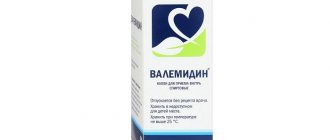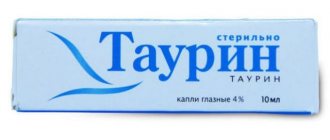pharmachologic effect
Ingaron is an immunomodulatory drug containing human interferon gamma (recombinant). Gamma interferon, which is part of the drug Ingaron, consists of 144 amino acid residues, with the first three amino acid residues (Cys-Tyr-Cys) replaced by Met.
The average molecular weight reaches 16.9 kDa.
Recombinant interferon is obtained by microbiological synthesis in a recombinant strain of the microorganism Escherichia coli and purified by column chromatography. The specific antiviral activity of the drug on human fibroblasts that are infected with vesicular stomatitis viruses is 2*107 U/mg protein.
Interferon gamma is considered one of the key compounds (anti-inflammatory cytokine) involved in the immune response. Endogenous interferon is produced by killer cells, CD 8 cytotoxic suppressor cells and CD4 Th1 cells.
Receptors for gamma interferon are present in macrophages, natural killer cells, neutrophils, and T-lymphocytes. In this case, interferon gamma activates the effector functions of these cells, including cytotoxicity, bactericidal activity, synthesis of nitroxide and superoxide radicals and cytokines (which have bactericidal and anti-inflammatory effects).
In addition, gamma interferon has a direct antiviral effect, which is realized by blocking the replication of DNA and RNA viruses, the production of viral proteins and viral particles (mature). Interferon also has a cytotoxic effect on virus-infected cells.
Ingaron inhibits B-cell responses to interleukin-4, inhibits the expression of the CD23 antigen and the production of Ig. The drug induces apoptosis of differentiated B cells.
In addition, when using interferon, there is a decrease in the suppressive effects of interleukin-4 on interleukin-2-dependent generation and proliferation of lymphokine-activated killer cells.
Interferon induces the synthesis of proteins in the acute phase of inflammation and increases the expression of genes C2 and C4 components of the complement system.
The drug, unlike other interferons, stimulates the expression of MHC class 1 and 2 antigens on various cells, while the expression is accelerated, including on those cells that do not constitutively express them, which helps to increase the ability to recognize various antigens by immune cells (T- lymphocytes).
Interferon reduces the synthesis of b-TFG, which is involved in the development of fibrosis of the lungs and liver.
The pharmacodynamics of Ingaron are not presented.
Composition and release form
The active component of the product is human interferon gamma.
An auxiliary component is mannitol.
It is sold in bottles, each of which contains 100,000 or 500,000 IU of lyophilisate (powder), from which the solution is prepared. Bottles are packaged in 1 or 5 pieces. in cardboard boxes and, if this is an option for injection use, then also in blister packs. The medicine can be used in the following ways:
- give subcutaneous or intramuscular injections;
- instill through the nose.
Ingaron for intranasal (through the nose) use is equipped with a pipette and a special dropper cap, and for injections it is sold in ordinary closed bottles without any accessories. Sometimes the packages also contain a solvent (water for injection) in ampoules.
It turns out that the composition of the powder, regardless of the intended method of use, is the same, but some devices are placed in the packs, thanks to which it becomes more convenient either for injections or as nasal drops.
Indications for use
The parenteral form of the drug Ingaron is used in complex treatment regimens for patients with:
- chronic form of viral hepatitis C;
- chronic form of viral hepatitis B;
- immunodeficiency conditions, including HIV infection and AIDS;
- pulmonary tuberculosis;
- oncological diseases (if it is necessary to prescribe immunomodulators, including in combination with chemotherapy);
- genital herpes and herpes zoster associated with herpes zoster (Ingaron can be used as monotherapy);
- urogenital chlamydia;
- chronic prostatitis;
- anogenital warts associated with HPV (including to prevent relapse of the disease);
Ingaron is also used to prevent the development of complications in patients with chronic granulomatous disease.
Ingaron 500,000 IU No. 5 bottle
Pharmacological action - immunomodulatory, antiviral.
Indications of the drug Ingaron®
Lyophilisate for preparing a solution for intramuscular and subcutaneous administration
Complex therapy:
- chronic viral hepatitis C;
- chronic viral hepatitis B;
- HIV/AIDS infection;
- pulmonary tuberculosis;
- oncological diseases (as an immunomodulator - including in combination with chemotherapy);
- urogenital chlamydia;
- chronic prostatitis;
- genital herpes virus infection and herpes zoster (Herpes zoster) - in monotherapy;
- anogenital warts (human papillomavirus) - treatment and prevention of relapse of the disease.
Prevention of infectious complications in patients with chronic granulomatous disease.
Use during pregnancy and breastfeeding
Contraindicated during pregnancy.
Side effects
Lyophilisate for preparing a solution for intramuscular and subcutaneous administration: local soreness at the site of subcutaneous administration in the form of mild aching pain (like an overtrained muscle) and hyperemia.
The use of doses over 1 million IU may be accompanied by the development of a flu-like syndrome: headache, weakness, fever, joint pain. Mild symptoms do not require pharmacological correction. In case of severe symptoms, relief with paracetamol.
Directions for use and doses
Intramuscularly, subcutaneously. The contents of the bottle are dissolved in 2 ml of water for injection. The dose of the drug is determined individually.
For the treatment of patients with chronic viral hepatitis B, chronic viral hepatitis C, as well as HIV infection/AIDS and pulmonary tuberculosis, the average daily dose for adults is 500 thousand IU. It is administered once a day, daily or every other day. The course of treatment ranges from 1 to 3 months; if necessary, the course of treatment is repeated after 1–2 months.
To prevent infectious complications in patients with chronic granulomatous disease, the average daily dose for adults is usually 500 thousand IU. It is administered once a day, daily or every other day. The course consists of 5–15 injections; if necessary, the course is extended or repeated after 10–14 days.
For the treatment of cancer, the average daily dose for adults is 500 thousand ME. It is administered once a day, every other day.
For the treatment of genital herpes viral infection, herpes zoster and urogenital chlamydia, the average daily dose for adults is 500 thousand IU. It is administered once a day, subcutaneously, every other day. The course of treatment is 5 injections.
For the treatment of chronic prostatitis, the daily dose is 100 thousand IU. It is administered once a day subcutaneously, every other day. The course of treatment is 10 injections.
For the treatment of anogenital warts, the daily dose is 100 thousand IU. It is administered subcutaneously once a day, after cryodestruction, every other day. The course of treatment is 5 injections.
Storage conditions for the drug Ingaron®
In a dry place, protected from light, at a temperature of 2–10 °C. Do not freeze.
Keep out of the reach of children.
Shelf life of the drug Ingaron®
2 years.
Do not use after the expiration date stated on the package.
Mode of application
Ingaron is intended for the preparation of parenteral solution. The prepared solution can be administered exclusively intramuscularly or subcutaneously. Administration of the drug intravascularly is prohibited.
To prepare a parenteral solution, the contents of the bottle should be dissolved in 2 ml of liquid. It is proposed to use exclusively water for injection as a solvent. The preparation and administration of the solution must be carried out under aseptic conditions.
Dosage of the drug Ingaron:
For chronic forms of viral hepatitis C and B, as well as immunodeficiency conditions, including HIV infection and AIDS, Ingaron is often prescribed at a daily dose of 500,000 IU. The drug should be administered daily or every two days at the indicated dose. The average course duration is 1-3 months. If necessary, a second course of therapy is carried out after 1-2 months.
If it is necessary to prevent infectious complications in granulomatous disease, the administration of Ingaron in a daily dose of 500,000 IU is often prescribed. The dose is administered daily or every two days. The course dosage is 5-15 injections, depending on the degree of risk of complications. If necessary, the course is repeated after a few weeks.
In complex treatment regimens, cancer patients are prescribed 500,000 IU of Ingaron per day. The dose is administered every day or every two days. The duration of therapy is calculated by the attending physician.
For urogenital chlamydia, herpes zoster and genital herpes, Ingaron is often prescribed at a daily dose of 500,000 IU subcutaneously. The dose should be administered every day or every two days. Course dosage – 5 injections.
In the chronic form of prostatitis, the administration of 100,000 IU of Ingaron per day (subcutaneous) is often prescribed. The dose should be administered daily or every two days. Course of treatment (general) – 10 injections.
For anogenital warts associated with HPV, 100,000 IU of the drug Ingaron per day (subcutaneous) is often prescribed. The course of treatment begins after cryodestruction, injections are carried out daily or every two days. Course of treatment (general) – 5 injections.
How to take Ingaron
A detailed description of taking Ingaron is presented in the instructions.
For intramuscular injections, the drug must be dissolved in 2 milliliters of water for injection. The amount of Ingaron is determined individually:
- For the treatment of chronic hepatitis C and B, HIV infection and pulmonary tuberculosis, a daily amount of the drug of 500 thousand ME is used. Prescribed once a day, or every other day. The therapeutic course is 1-3 months, treatment can be repeated after 1-2 months.
- For preventive purposes, patients suffering from chronic granulomatous disease are recommended an average daily amount of the drug of 500 thousand ME. Use once a day, or every other day. For treatment, 5 to 15 injections are sufficient, it is possible to continue therapy after 2 weeks.
- The daily dosage prescribed to cancer patients is 500 thousand ME. Apply once a day, every other day.
- For the treatment of genital pathology caused by the herpes simplex virus and herpes zoster, the average amount of the drug is 500 thousand IU per day. Prescribed once a day, subcutaneously, every other day. 5 injections are enough for a course.
- A similar regimen is used in the treatment of urogenital chlamydia.
- 100 thousand IU of Ingaron per day is necessary for the treatment of chronic prostatitis. Apply once a day subcutaneously, every other day. 10 injections are enough for a course.
- Treatment of anogenital warts is carried out with Ingaron in the amount of 100 thousand IU. The drug is prescribed once a day subcutaneously, after preliminary cryodestruction, every other day. Treatment course: 5 injections.
For intranasal use of the drug, the contents of the bottle should be dissolved in 5 milliliters of water for injection:
- When infected with the influenza virus, the causative agent of acute respiratory viral infection, 2 drops of Ingaron are instilled into each nasal passage, after preliminary cleansing of the nasal cavity. Treatment is performed 5 times a day for a week.
- To prevent the above pathologies, 2-3 drops are instilled into each nasal passage. Therapy is carried out every other day, half an hour before breakfast for 10 days. Repetition of treatment is allowed. For single contact with the patient, one instillation is enough.
To ensure equal distribution of Ingaron in the nasal cavity, it is necessary to massage the wings of the nose after instillation.
Side effects
When injecting the drug Ingaron, allergic reactions are likely to occur, as well as local effects in the form of pain. In some cases, during therapy, the development of muscle pain (aches), hyperthermia and hyperemia was noted.
When using Ingaron in a dose of more than 1,000,000 IU, flu-like symptoms are likely to develop, including pyrexia, arthralgia, weakness and headache. If these symptoms are mild, no specific therapy is required; if the symptoms are severe, paracetamol is recommended.
Nosological classification (ICD-10)
Respiratory tuberculosis, not confirmed bacteriologically or histologically (A16)
Other sexually transmitted chlamydial diseases (A56)
Anogenital herpetic viral infection [herpes simplex] (A60)
Other diseases primarily sexually transmitted, not elsewhere classified (A63)
Herpes zoster (B02)
Chronic viral hepatitis B with delta agent (B18.0)
Chronic viral hepatitis B without delta agent (B18.1)
Chronic viral hepatitis C (B18.2)
Human immunodeficiency virus disease [HIV] (B20-B24)
Malignant neoplasm without specification of localization (C80)
Granulomatous changes of the skin and subcutaneous tissue (L92)
Chronic prostatitis (N41.1)
Inflammatory diseases of the female pelvic organs caused by chlamydia A56.1 (N74.4*)







